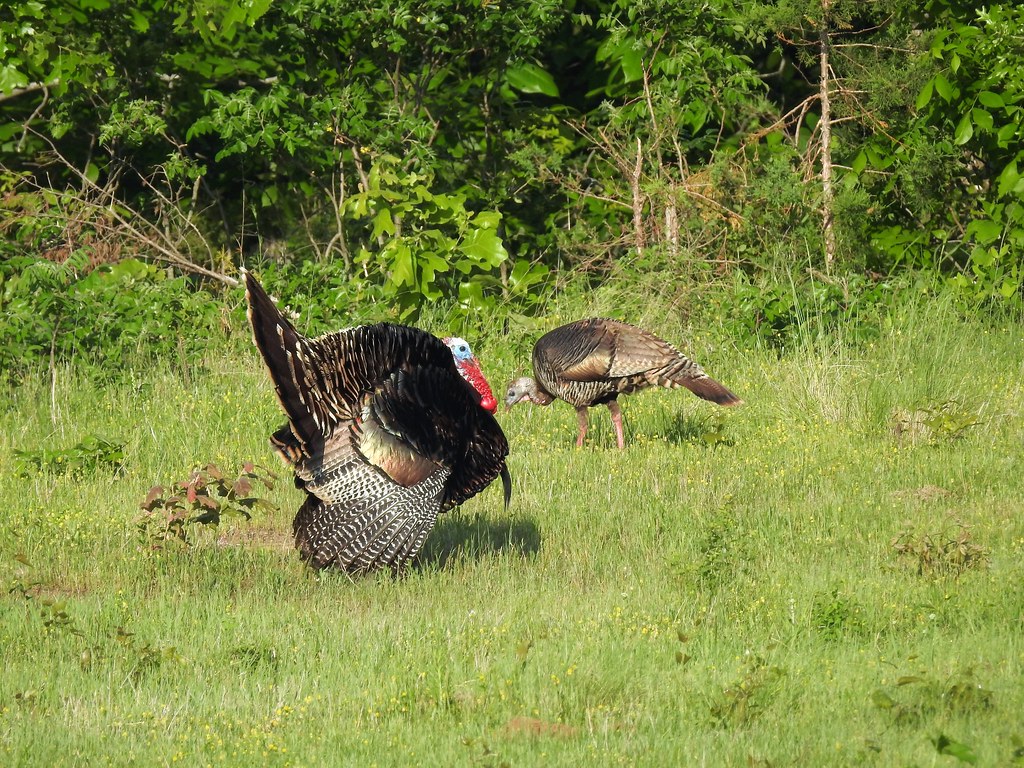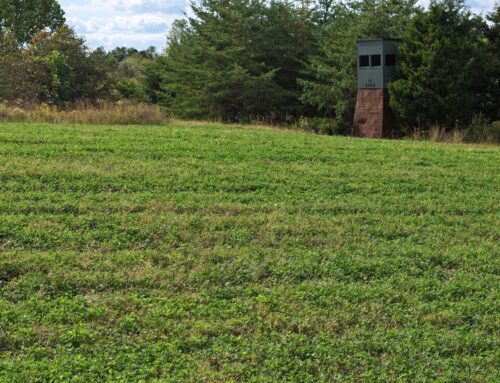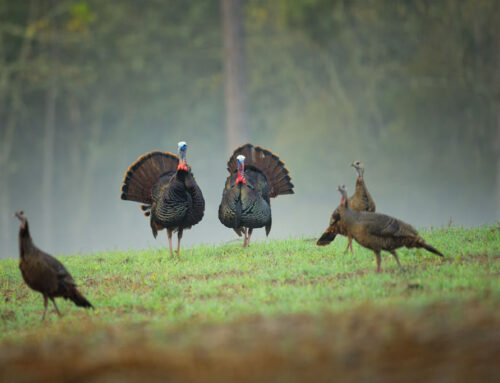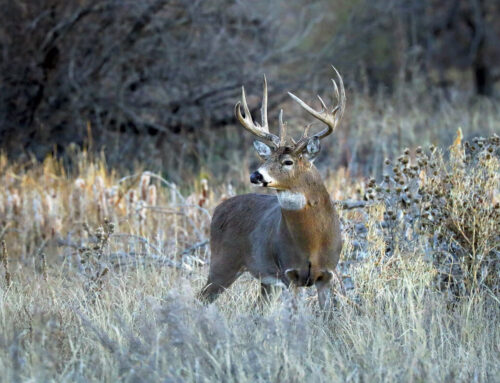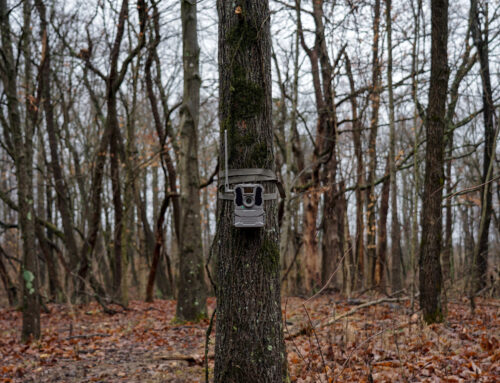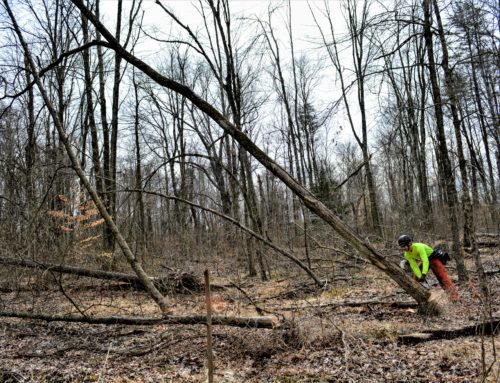Edited 07/22/2024: A revised and improved version of this article has been published. Click here to access the latest article.
All species of wildlife require four habitat components to survive: food, water, shelter, and space. Eastern wild turkey are a forest dwelling species, however, they are considered “habitat generalists” as they are highly mobile and can find their life needs from a variety of land types. However, for them to thrive, good habitat contains all four of the habitat components needed for survival, during all four seasons of the year.
7 Ways to Improve Wild Turkey Habitat:
1. Create and maintain openings
Openings such as fields, pastures, and forest openings are important aspects of wild turkey habitat because they provide areas for nesting, feeding, and brooding. The size of a managed opening is often determined by the management practice used and the surrounding habitat, but 1 to 3 acres is considered the favorable size for openings. Optimally, multiple openings connected by herbaceous travel lanes should be distributed throughout a property. At minimum, 10% of a primarily wooded property should consist of managed openings.
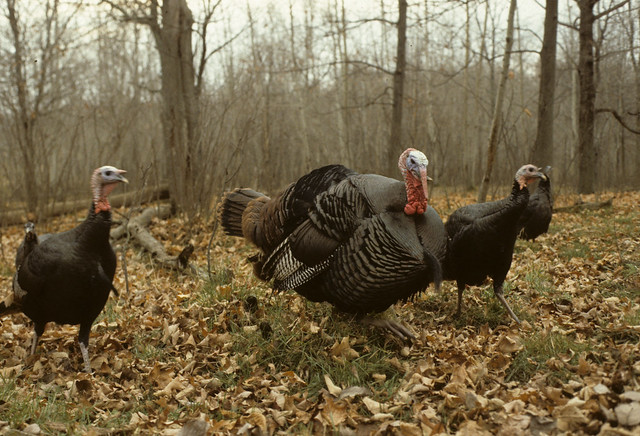
2. Plant and maintain mast-producing trees and shrubs
Mast-producing vegetation refers to species which produce fruit, berries, nuts, or seeds which serve as food sources for wildlife. Examples of good mast-producing tree species include oaks, hickories, and persimmon. Brambles, such as blackberries and raspberries, also provide good sources of food.
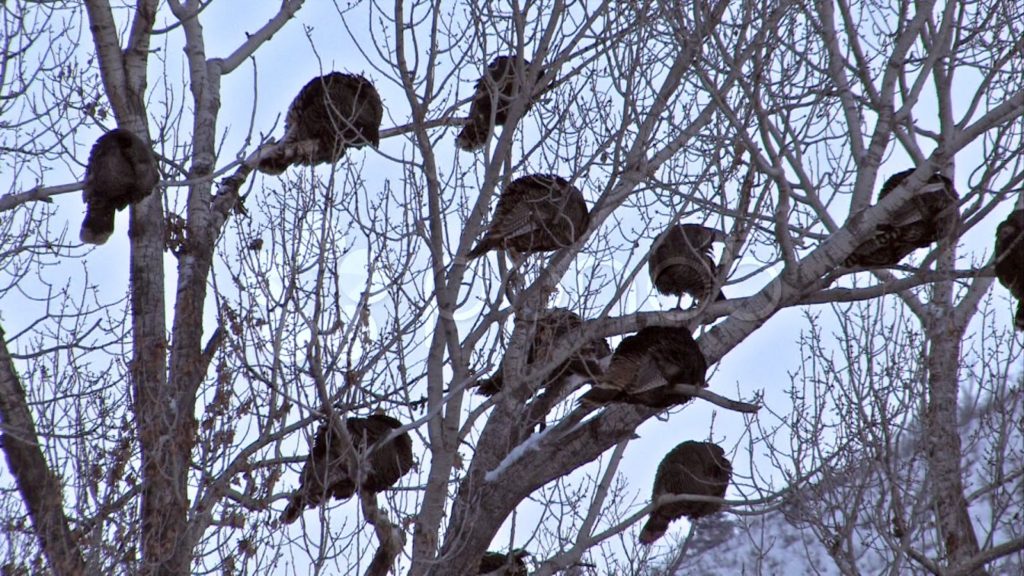
3. Provide and maintain sources of protective cover for roosting and nesting
Wild turkeys roost in trees. Native hardwood tree species, such as oak, hickory, and black cherry provide good canopy cover for roosting and cover from predators. Coniferous trees such as pines, cedars, and hemlocks serve as essential sources of cover in the winter months. Hens nest on the ground and require lateral vegetative cover, in areas with a well-developed understory and/or areas with dense vegetation.
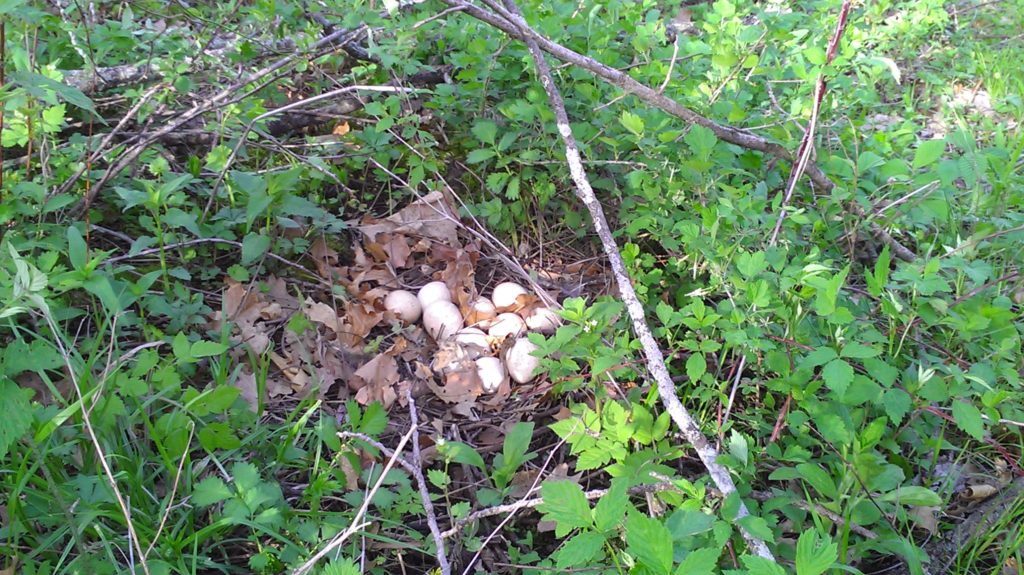
4. Establish and maintain food plots
Many properties may benefit by providing additional food sources for turkey in the form of food plots. Food plots are small strips or blocks of land which are planted with grain crops, legumes, and/or root vegetables for wildlife to consume. Food plot plantings can be perennial and left standing year-round for several consecutive years, or can be annual, which only last a single growing season. Both perennial and annual food plots provide excellent sources of food and having both types of plots on a property is recommended to provide the most benefit. Perennials provide a constant source of food year-round and are the backbone of a food plot program, while annuals are used to produce rapid bulk food which are beneficial during high-stress periods of the year.
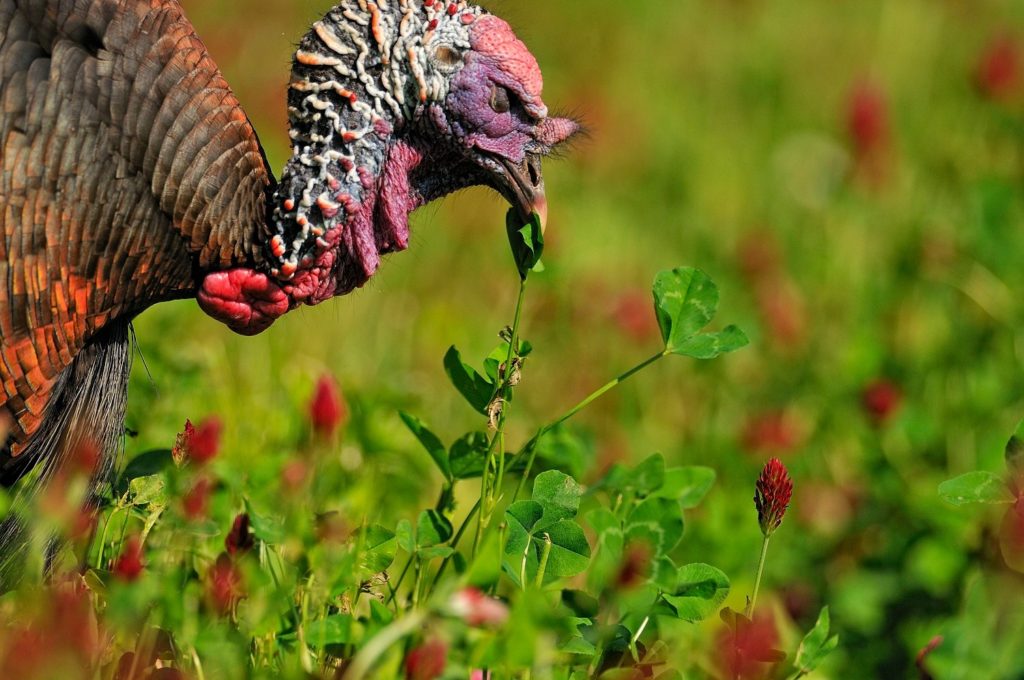
5. Establish and maintain native grasses and forbs
Native grasses and forbs provide wild turkeys with protective cover, nesting area, and sources of food. The seeds produced by native grasses and forbs serve as an excellent source of food as well as the insects they hold. 10% of a wild turkey’s diet consists of consuming insects. Planting a mixture of warm season and cool season grasses provide cover year-round. Warm season grasses to plant include big and little bluestem, switchgrass, and Indiangrass. Some cool season grasses and legumes to plant include a mixture of clovers, alfalfa, timothy grass, and redtop grass.
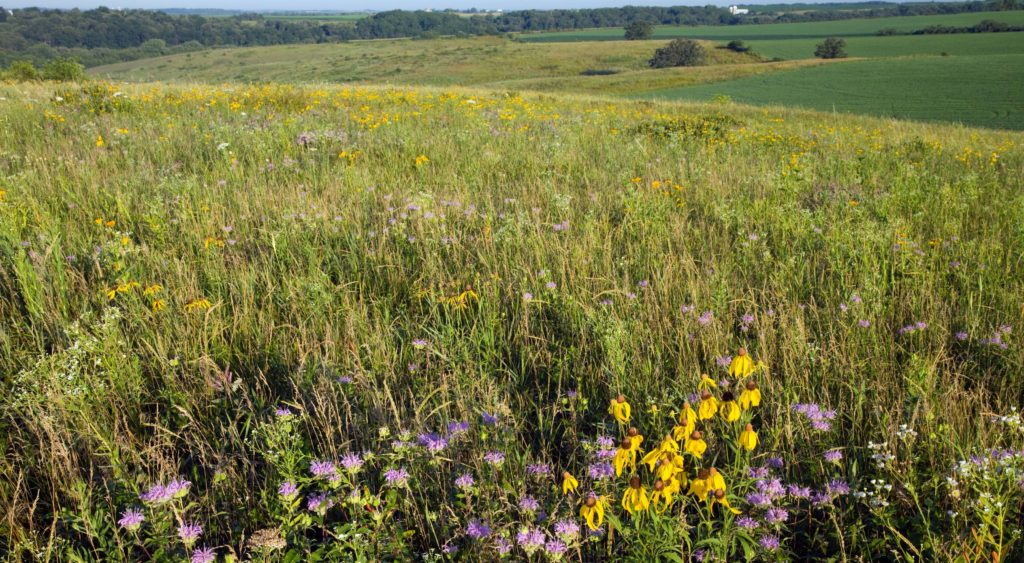
6. Conduct timber stand improvement (TSI); forest thinning and timber harvests
Timber Stand Improvement (TSI) is a management technique in which desirable trees are favored and undesirable trees are removed, to improve the growth productivity of desirable trees by reducing the effects of competition and by freeing up canopy space around them. Wildlife habitat can be improved through the use of TSI by favoring mast-producing trees which produce sources of food. Timber species used for cover, such as coniferous species (pine, cedar, etc.) should be left standing. TSI can be used to thin over-stocked timber stands, increasing regeneration and overall health and production of the stand, providing ample food sources as well as making it easier for turkey to travel. Selective timber harvests can also be utilized to perform TSI by removing over-mature and poor-quality trees, as well as alter the species composition and age class of a stand.
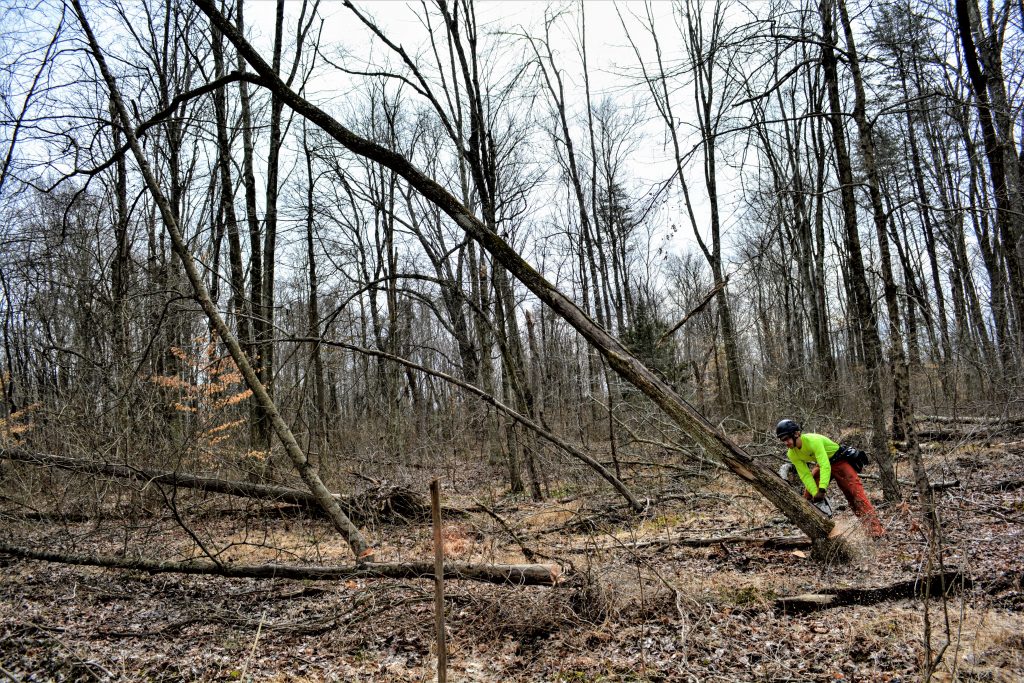
7. Manage invasive plant species
Invasive species management promotes the regeneration of native, desirable plant species in the understory. Invasive species spread rapidly and aggressively, preventing the growth of crucial native vegetative species utilized for food, cover, roosting, and nesting by wild turkeys. Invasive plants can be removed mechanically or treated with herbicide, and some species may require a combination of the two to get effectively under control.
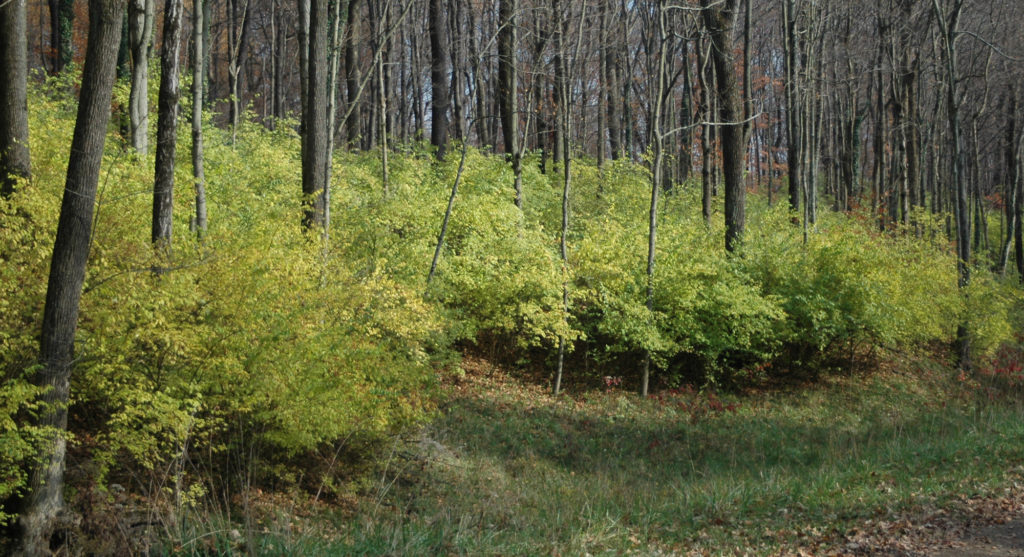
Link to Indiana DNR’s page on Wild Turkey: DNR: Wild Turkey (in.gov)

